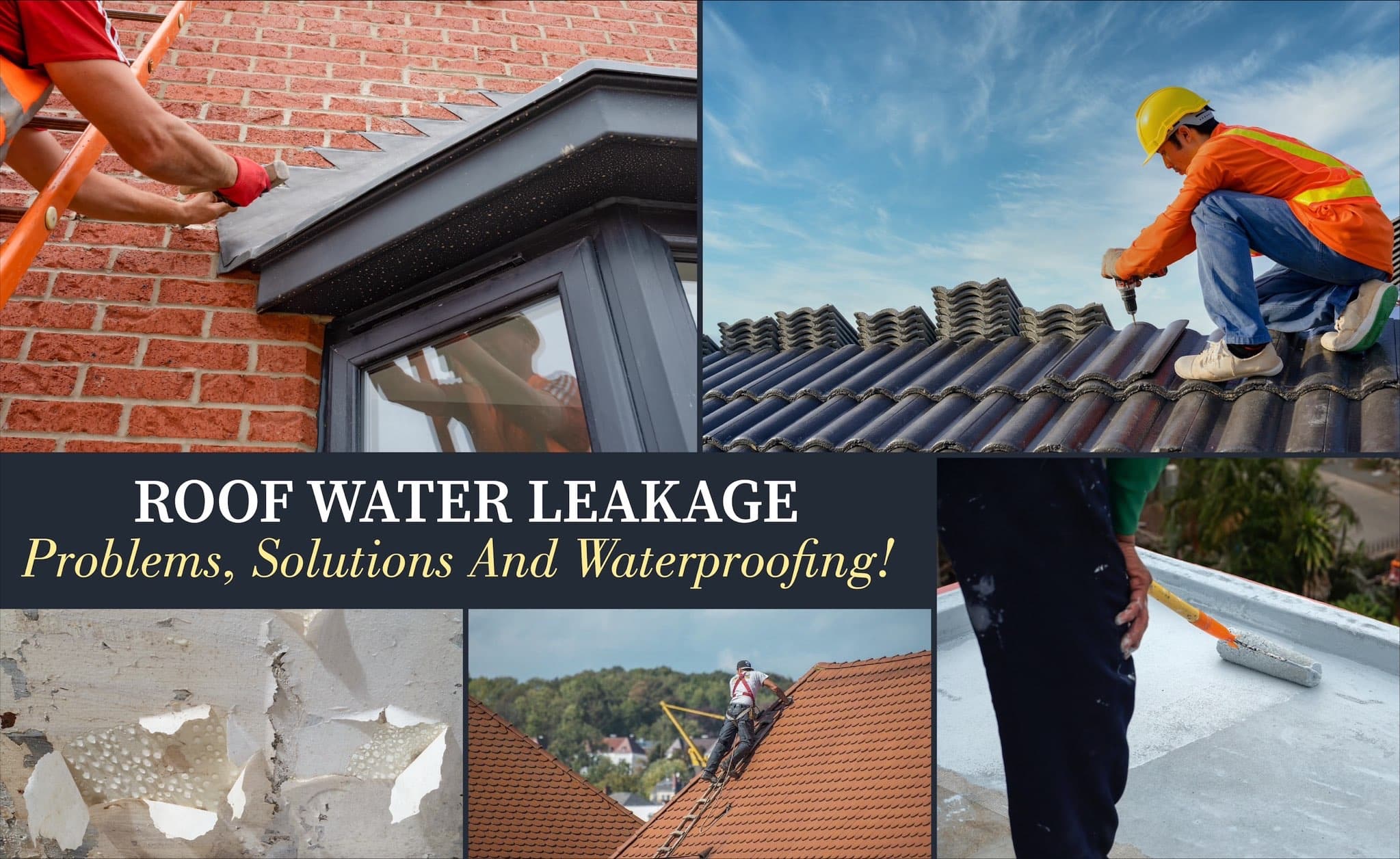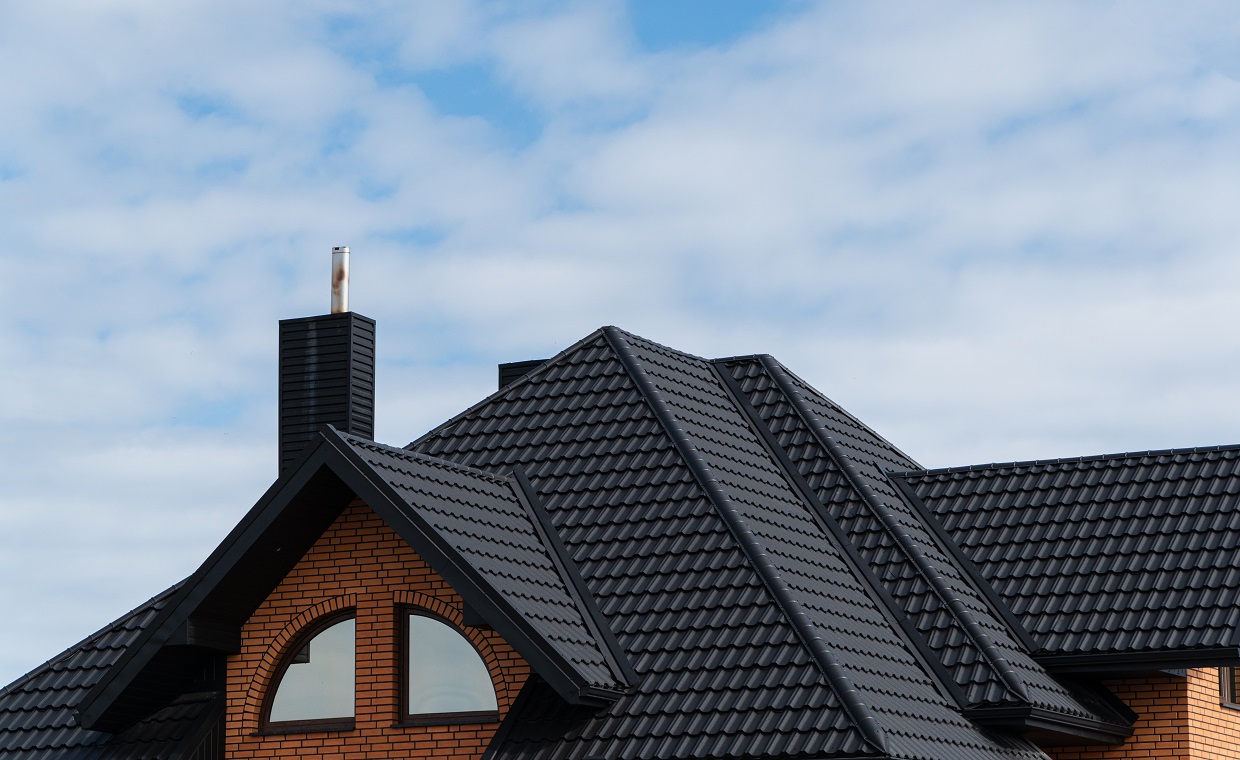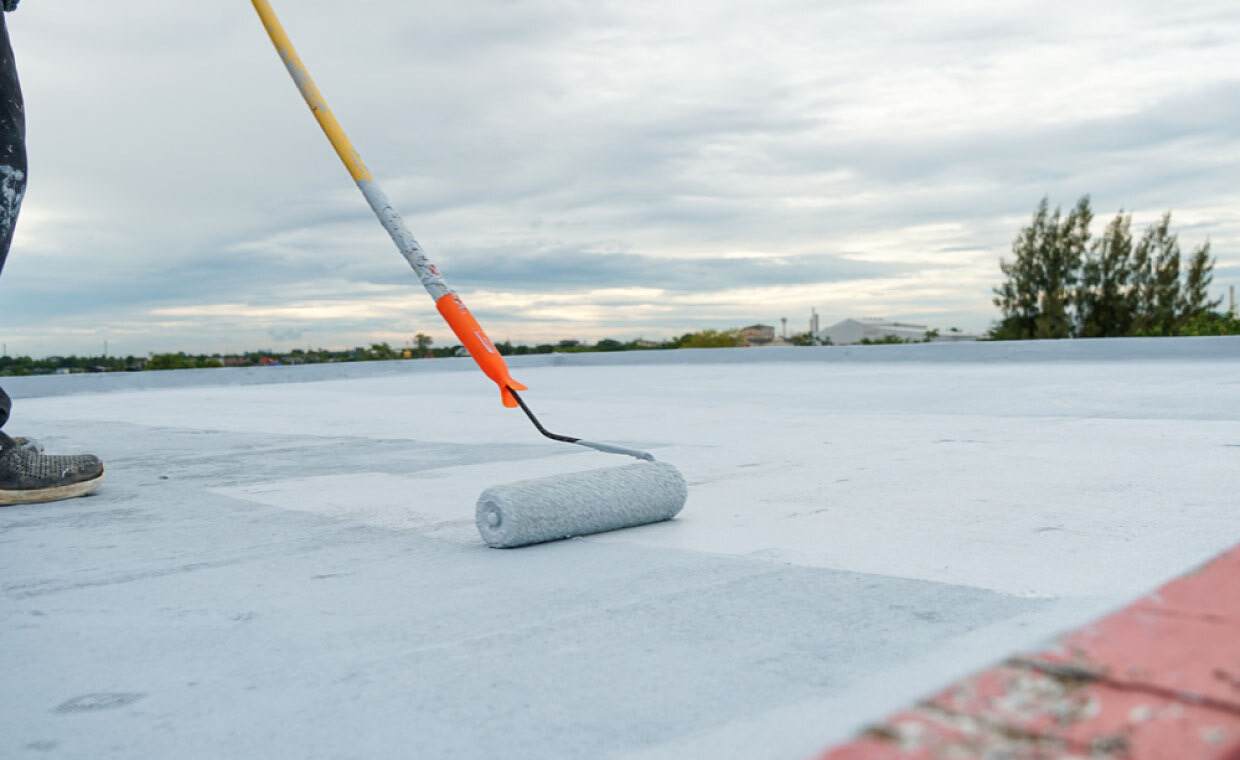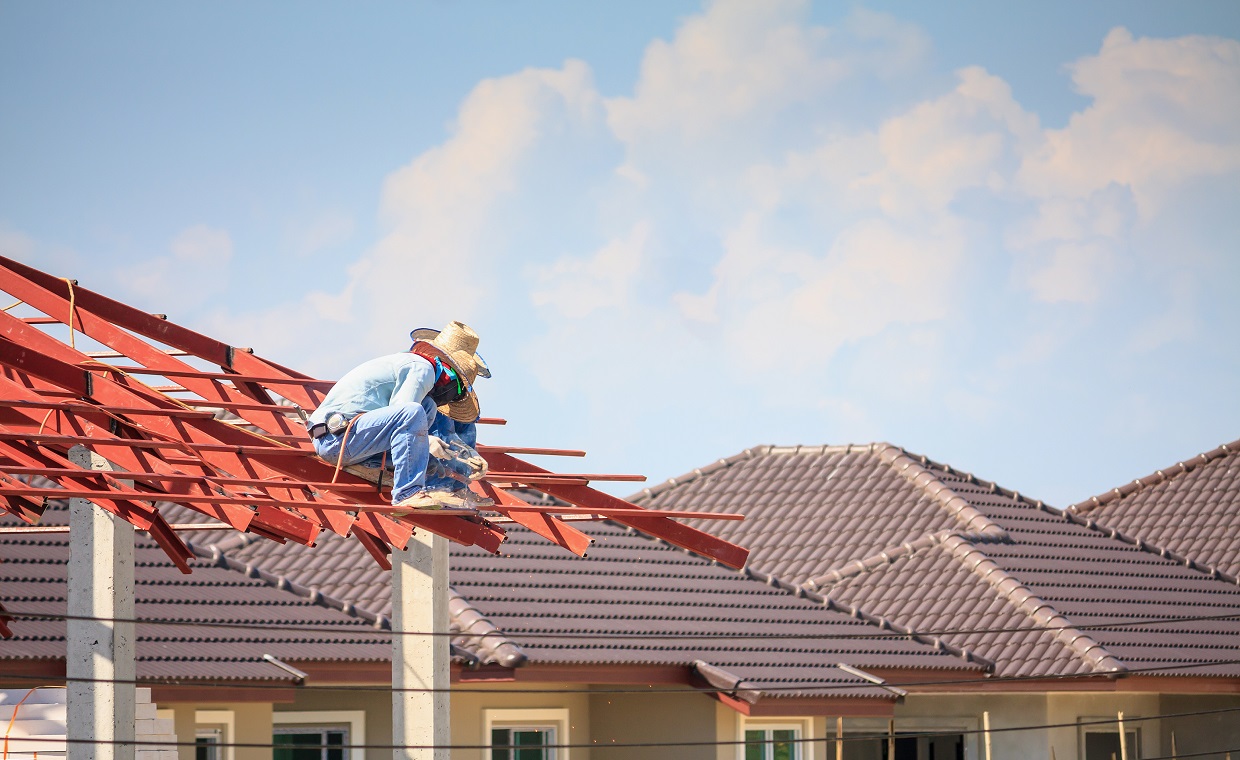
Table of Contents
Quick Summary
- Definition of Roof Leakage
- Common Harms Caused by Roof Leakage
- Key Causes of Roof Leaks
- How to Stop Water Leakage from Roof
- Types of Waterproofing Materials
Is your roof dripping? Want to know how to stop water leakage from roof? Various factors can cause roof leaks, frequently resulting in leaks even when you have done nothing wrong with your roof. It happened very recently. However, what happens if your roof begins to leak? Are you sick of emptying the trashcan or bucket every time it rains? If this is the case, here are a few solutions to your leaking roof problem and ways we can help you get rid of it once and for all.
Want to Know How to Stop Water Leakage from the Roof? Let’s Begin

Let’s first see what roof leakage is and understand the causes of roof leakage and various roof water leakage solutions that we can use to prevent water leakage from the roof.
What is Roof Leakage?
Most of us have been prone to taking the ceiling over our heads for granted. We only think about it once the damage goes out of control and the roof leaks. Only when the droplets start falling on us, do we wonder how to stop the water leakage from the ceiling.
You cannot ignore or postpone the repair when water leaks from the roof. The simple fact is that by the moment your roof begins to leak, you have to think about stopping water leakage from the top because it is certain that the problems hiding around your residence may have progressed to a critical level. Furthermore, that leak can cause various issues, such as damaged roofs, water stains, rot, mold, and structural damage. So let’s see what to do when your roof leaks.
What Harms Does Roof Leakage do to our Homes?
Leaking roof emerges as a significant challenge only during the rainy season. A leak in your ceiling can spread from the upper edge of your home down to the foundation, causing rot, decay, and significant structural damage. Thus, it is essential to know how to stop leakage from the ceiling the moment it shows up. Dry rot is caused by wall plaster damage. This promotes the growth of molds and bacteria. It causes chemical start-up emissions from building materials and destroys doors, windows, other wood products, and household items. It also creates dampness, which is harmful to the health of the house’s occupants. Roof trusses and ‘Purlins’ begin to rot/rust as a result of continued dampness exposure. Leakages do much harm like ceiling and attic damage, insulation deterioration, mildew and mold, drywall sagging, fire dangers, slippery surfaces, inefficiency in energy use, structure compromise etc. We will now get a brief on how to stop water leakage from the roof and its prevention.
Statistics of Water Leakage from the Roof all over the World
- Water intrusion causes 40% of all construction problems.
- Water intrusion is responsible for even more than 70per cent of total building litigation.
- Roofs, on average, only last approximately half of their intended lifetime.
- Several roofs leak within the first two years of service.
- Building owners in the United States spend over $12 billion annually on repairing, re-covering, or re-roofing.
The above Statistics are reported by Architect Magazine on their website under the title “When it Leaks it Pours”.
With this brief introduction of what roof leakage is, what harm roof leakage does and what are the statistics of roof leakage around the globe, we will now proceed to know about the causes of roof leaks, roof water leakage solutions (how to stop water leakage from roof) and waterproofing in detail.
Causes of Roof Leaks
Roof installation errors, poor workmanship, and poor quality materials used in roof construction are responsible for roof leaks. For example, incorrectly drilled holes, broken or missing shingles, and damaged gutter, vent, or chimney surrounds. In addition, a buildup of waste on the roof or in the gutter obstructs the smooth flow of rainwater, resulting in leakage. High wind pressure, storms, and heavy rain all have an impact on the roof structure and cause leaks. Below are some most generally seen causes of roof leaks, which are described and explained in detail.
01. Roof Cracks

Courtesy - Healthy Homes
The RCC shrinks over time, causing cracks in the roof. A roof crack allows rainwater to seep into the house. This is one of the causes of roof leaks.
02. Improper Slope of the Roof

Courtesy - International Association of certified home inspectors
Water leakage from the roof occurs when the roofing is not adequately drained. Mathematically, a roof’s slope must be 1 in 40 for regular rainfall regions and 1 in 20 for high rainfall regions in order to drain all the water.
03. Flashing Damages

Courtesy - chronicleonline
Flashings, intended to keep rainwater from entering the building at joints or seams, can deteriorate with time. This occurs due to wear and tear wind, or other extreme environmental conditions that result in water penetration.
04. Tiles Damages

Courtesy - decra.com
Minor movement of individual shingles, damaged shingles, or damage from heavy rain can cause water to penetrate the layer beneath shingled roofs. This may be the starting place for water leakage from the roof.
05. Improper Maintenance

Water will accumulate on roofs if they are not adequately cleaned. Water seeps through the roofing because it can’t drain off.
06. Roof Moisture in Excess Amount

If the moisture on the roof does not dry following rain, it will eventually lead to water leakage from the roof.
07. Corrosion

The steel bars used in RCC corrode due to ambient oxygen and moisture reactions. This expanding steel forces the concrete and plaster away from the roof, gradually eroding them. Many cities along the coastal belt witness rust, which is attributed to the prevalence of salinity in the air.
08. Aging

The construction material in the structure approaching the end of its useful life is one of the significant causes of roof leaks. While most roof tiles are intended to survive for decades, their safety will deteriorate over time, making them more vulnerable to water incursion. You may reduce this danger by performing routine maintenance, such as cleaning fungus from your roof shingles. However, remember that nothing lasts forever. Extreme temperatures, harsh weather, accidents, and debris will wear down your roof over time, making the tiles more fragile and leading to cracks.
These were some major and most commonly known causes of roof leaks in homes As we have seen the causes of roof leaks, you might be thinking about how to prevent roof leaks and the various roof water leakage solutions available. We will now see how to prevent roof leaks and stop water leakage from the roof in brief. Talking about roofs, we have a detailed article about the types of roofs used for homes or buildings, have a look at it.
How to Stop Water Leakage from Roof
Below are the standard methods to prevent roof leaks:
01. Waterproofing (What is Waterproofing a House?)

The waterproofing of a house can be divided into three parts. They are waterproofing roofs, waterproofing sunken slabs and waterproofing toilets. So in this section, we will understand waterproofing is and how it can be done on roofs, sunken slabs and toilets.
Waterproofing for Roof
What is waterproofing a house? Have you ever thought about what to do when your roof leaks? How to stop water leakage from the roof? There are three types of waterproofing. According to TalibR. ,Boyd D. ,Hayhow S. ,Ahmad A.G. ,Sulieman M (Authors of Investigating effective waterproofing materials in preventing roof leaking; initial comparative study), waterproofing for roofs is extremely important in humid tropical climate regions. Flat roofs are given an even slope to improve the flow of water towards drain pipes. As the first coat, a thin coating of waterproof material, often a slurry mixture of polymer-based compounds and Cement in the ratio of 1:1.25, is applied. After this layer has solidified, two other coatings with a 1:1.5 ratio are applied at 24-hour intervals. This is set to run for 48 hours. To dry the new surface, wet squeezed gunny sacks are utilised.
Similarly, for slanted roofs, the polymer-based chemical and Cement slurry is applied right to the top of the rooftop structure slab. The approaches described above are primarily concerned with preventing roof leaks during a house’s construction. To halt leaks in an existing house, however, all water-proofing layers just above the concrete slab must be removed and the surface thoroughly cleaned. The entire process is identical to a new home being built. In this type of waterproofing, the roof is covered.
Waterproofing for Sunken Slab
RCC slabs are placed depressed in thickness from the general floor level for wet spaces such as toilets, balconies, and kitchen wash areas. These recessed regions separate moist and dry parts of buildings Waterproofing for slabs in these regions comprises a 20cm wide polymer-based cement concrete belt known as Kerb, initially installed over the sunken slabs. This belt has been cured, and solid blocks have been laid on top. This method of waterproofing guarantees that moisture from these wet places does not penetrate the walls.
Waterproofing for Toilets
Water and moisture are constantly present in toilets and showers. Water penetration into concrete slabs can result from flush water and floor wash. Three major procedures are involved in waterproofing the slabs of concrete of toilet flooring. It begins with a screed of cement paste blended with a 20mm coating of the waterproofing agent. After that, it is cured for three days. The 112 mm thick brickbat layer above it is put randomly to avoid joint symmetry. Then, sand-cement mortar combined with polymer is used to cover the gaps between the brick bats. This coating is cured for the next three days. The final layer is 10 mm-20 millimetres thick and constructed with sand-cement–mortar combined with a waterproofing agent. It is laid in such a way that the floor slopes towards the drain. Ponding is used to cure this layer for 10 days. This waterproofing methodology guarantees that no water penetrates into the concrete block from toilets or showers.
We here at Gharpedia also have a detailed article on how important it is to waterproof your house:
02. Proper Maintenance

Courtesy - adorable-home.com
A proper roof maintenance strategy can prevent any major roof problems. The first step is to talk to a local roofer, schedule an inspection, and assess the roof correctly.
03. Proper Installation of Tiles

When looking for how to stop leakage from the roof, we should first understand that prevention is better than cure. Therefore, at the time of installation of tiles on the roof, we have to be very cautious and precise so that there are no chances of leakage from the water flowing down from the passage in the tiles.
04. Proper Joints Sealing

Your odds of coping with an emergency roof rise if they originate from roof joints. Rainwater can enter your property through cracks and also chalk and aluminium flashing where surfaces meet. These regions frequently feature chimneys and valleys, which can be sealed with roofing sealant or cement. However, before applying the sealer, ensure that the place is dry and debris-free.
05. Using High-Quality Roof Vents

Any structure that protrudes from the roof’s surface can be a cause of leaks. In such a case, roof water leakage solution is a must. Light fixtures, fireplaces, and roof vents are examples of such things. For example, roof vents that are not adequately sealed frequently have a supply of water intrusion.
06. Choosing Right Roofing Materials

Wondering how to prevent roof leaks? Roofs are the most exposed elements of a building to rain or snow. Waterproofing for roof functions as a barrier, protecting the structure from rain. As a result, roof water insulating done with the proper roof insulators and it will protect the structure from rain and snow while also enhancing the building’s longevity and performance.
07. Using Proper Construction Practices

To insulate roofs from snow and rain, it is critical to employ the proper insulation materials. When it comes to roofing insulation, another crucial question posed to define the correct insulation system is which types of waterproofing materials should be used for the roof. Bitumen and tar liquid solutions are used for waterproofing, membrane, coatings, and supplementary products such as chamfer tapes and mastic springs to mind when roof weatherproof materials are mentioned. Aside from that, roof water furfural such as tiles coating and ceiling panels are used.
08. Removing Stagnant Water

Courtesy - pbs.twimg.com
Standing rainwater on a roof deck is also referred to as ponding, which describes how liquid accumulates in pools on particular areas of the roof, generating ponds. This usually occurs immediately following a strong downpour. Most pools, however, either flow off of the roof or dissipate. When water remains on the roof for an extended amount of time, often over 48 hours, it is a problem that must be addressed.
Types of Waterproofing Materials Available In the Market
Waterproofing systems can be used indoors or outdoors, depending on the level of water damage or the owner’s preference. The most significant advantage of waterproofing is that it increases the value of your home. This system keeps unwanted moisture from penetrating your walls and allowing mold to grow. Mold can have a negative impact on our health. It also prevents water seepage damage, which can compromise the structural integrity of your home. Metals rust due to moisture as well. As you are aware, unhealthy living conditions and weak foundations will reduce the value of your home. Furthermore, waterproofing systems can open the basement area, increasing the utility of your home’s square footage. This also helps to increase the value of your home in the future.
01. Polymerized Silicone Waterproofing
PSW is a tough, long-lasting terrace waterproofing system. Silicone, polymers, and vinyl have been specially developed to be highly elastic and durable. It is appropriate for both indoor and outdoor roof, wall, and sealing work.
02. Polyurethane Liquid Membrane
The material’s quality is directly related to the polyurethane system that is used. There is a chance that the remaining moisture on the initial layer will cause bubbles to form between the layers. Polyurethane is very delicate to moisture content and should be evaluated before application; otherwise, membrane chipping or de-bonding may happen after a period of time.
03. Cementitious Coating
Cemented waterproofing is the most basic method of waterproofing because the materials required are readily available and simple to mix and apply. Many local businesses contributed to its creation. It is usually rigid or semi-flexible waterproofing, so it is used inside, such as toilets and areas that are not exposed to sunlight or weathering.
04. Latex Liquid Rubber
A liquid membrane is a thin covering that contains a base coat and a topcoat and is applied with a spray, roller, or trowel, providing greater flexibility than cementitious waterproofing. The liquid is healed in a rubber coating on the wall, and the surface elongation properties vary depending on the manufacturer.
05. Bituminous Membrane Coating
Because of its low efficiency, bituminous waterproofing is a popular technique for low-sloping roofs; it uses a flashlight and a self-adhesive membrane on the layer.
06. Rubberized Asphalt
Waterproofing bridges, plazas, parking lots, and commercial roofs are all common applications for the material. When applied to concrete, the material can reduce cracking, noise, and hydroplaning. It will also increase the underlying material’s durability. The cost of this material will be determined by the size of the treatment area. After being applied, the material usually dries in 3-4 hours.
07. Thermoplastic
Fabrics and clothing can also be made from the material. TPU coating could really help shield tents, adaptable ducting, drapes, pipe plugs, and much more in industrial settings. Split slabs, boundary lines, elevator pits, tanks, fountains, and decks are also common uses.
08. Crystalline Epoxy Coating
When the epoxied polymer is blended with the hardening substance, one of the waterproofing and sealing agents produced is epoxy resin. This resin creates a protective layer over the implemented surface, making it waterproof and corrosion-resistant.
09. Tar Sheet Waterproofing
The first is that their black colour absorbs rather than reflects heat. Tar Sheet roofing is also available in 1, 2, and 3-ply configurations. The 1-ply material is not long-lasting and, if used, can cause issues such as breaking down. Finally, if your roof is prone to retaining a lot of water or collecting puddles of stagnant water after rainstorms, the bitumen roof may prematurely age and be damaged.
Conclusion
An impactful waterproofing system must be durable during and after construction and robust and long-lasting. A premature failure of a waterproofing system can be disastrous and expensive. Roof waterproofing for structures is a barrier, protecting the structure from rain. The roof is one of the several external surfaces subjected to the elements. Because the roof is fully exposed, continuous rain might significantly impact it. This might result in water seepage and leaks, which detract from the overall appearance of your home. The initial roof waterproofing solutions utilised may be inelastic, and the labour required to execute them is frequently untrained. It also affects the durability of the roof. To avoid such problems, waterproofing your roof once more makes perfect sense. These are tips on how to stop water leakage from the roof, the causes of roof leaks and what to do when your roof leaks. Make sure to read more articles:
Damp Proofing vs Waterproofing
Need of Waterproofing for Your House!
Image Courtesy: Image 1
































